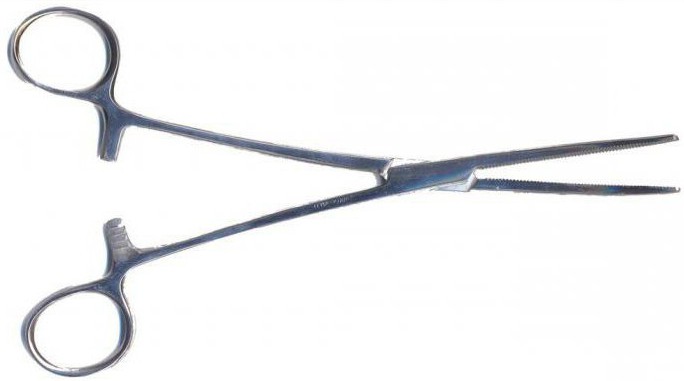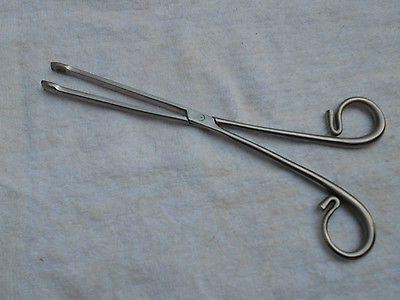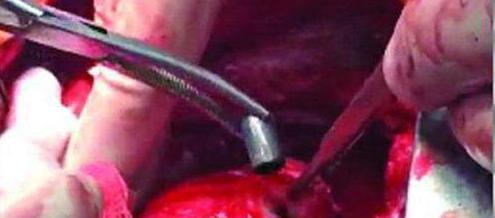In gynecology, many tools are used to perform manipulations during surgical interventions. Among them, one can also find bullet forceps, which serve to fix tissues. Previously, this surgical instrument was used to extract lead bullets and splinters from the human body; now it is widely used in gynecology and obstetrics.

Description
In gynecology, bullet forceps are a surgical instrument in the form of a cremallera clamp with pointed hooks that converge in a straight line, or with a sharp tooth. They are from eighteen to twenty-five centimeters in length and are used in exposure and fixation of tissues, capture and retention of the uterus during surgery. Pozzi, Barrett and Schroeder offered their modifications to this tool. The first bullet forceps served as an object with which lead bullets were pulled from the soldiers' bodies, later they began to be used in gynecology.
Appearance
This surgical instrument has a long working part and powerful handles. This is done so that the surgeon can firmly hold it in his hands during operations. Single-tooth bullet forceps are made of carbon steel with a chrome or nickel coating. They can be made of stainless steel, brass or titanium alloy. Usually in modern medicine, forceps 24 or 25 centimeters long are used.

Using
Bullet forceps along with mirrors and a lift are used if it is necessary to determine the connection of the peritoneal tumor with the genitals. First, the cervix is exposed using mirrors, it is disinfected with alcohol, forceps are placed on the lips (front and back), after which the mirrors are removed. Further, the doctor carefully inserts the index finger into the vagina or rectum, with the free left hand moves the lower part of the tumor. At this time, the assistant should pull the bullet forceps to move the uterus down. In this case, the tumor is stretched enough to become accessible for palpation.
Method No. 2
In some cases, doctors use a different method. For this, the tongs do not touch the handles; they remain in a calm state. With the help of external manipulations, the neoplasm is displaced up, left and right. If it is connected with the genitals, then the handles of the forceps will be drawn into the vagina at that moment. If the patient has a tumor of the uterus, the forceps will move more pronounced, much more than with neoplasms of the appendages. In the case when the tumor is located in the abdominal organs, for example, in the kidneys or intestines, the bullet forceps for uterine retraction will not change their original position.

Stop bleeding
In gynecology, the technique of uterine tamponade is often used to stop bleeding. In this procedure, the doctor uses expanders, several bullet forceps, mirrors, forceps, tweezers and curettes. First, the doctor disinfects the genitals. Then exposes the cervix, fixes it with bullet forceps. Then he disinfects the cervical canal, inserts a gauze swab into the entire vaginal cavity for twelve hours. Thus, the bleeding should stop.
There is another way to stop blood loss - the metreyrisis technique. First, the genitals are disinfected, the cervix is exposed and fixed by bullet forceps. Disinfection of the neck and cervical canal is also carried out extremely carefully. Then, a folded rubber balloon is inserted behind the internal pharynx using a forceps, after which it is filled through the tube with a sterile liquid, for example, saline. After that, the rubber tube is clamped with pean, and a load is attached to the bottom, which has a mass of three hundred grams.

Thus, bullet forceps are a necessary surgical tool in gynecology and obstetrics. They help fix the uterus, so that the physician has access to the cervical canal, cervix, etc. At different times, various doctors offered their modifications to this tool, in modern medicine they use a simpler and more convenient option. These are forceps that have curved lips that end with a sharp tooth. They relate to clamping tools that are designed to fix tissue. Made from safe material that does not cause allergic reactions.